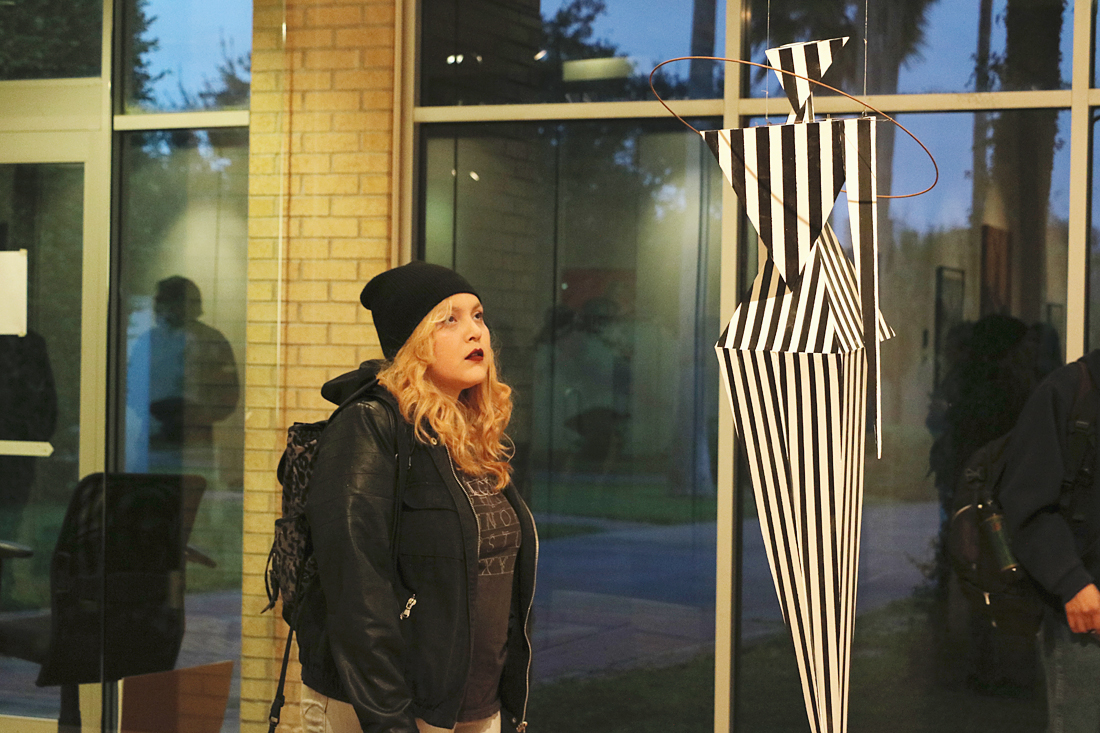
Vivian Zapata, an art education senior, looks at a hanging sculpture by Jimmy Peña last Tuesday in the Art Gallery at Rusteberg Hall on the Brownsville campus. ANA CAHUICHE/ THE RIDER PHOTOS.
Jimmy Peña, a Corpus Christi artist, changed directions in his career by switching from drawings to kinetic sculptures.
Last Tuesday, more than three dozen people saw that change during the opening reception of the exhibit, “Transition” in
the Art Gallery at Rusteberg Hall on the Brownsville campus.
“It helps me illustrate the different stages of work that I’ve done and how I’ve got a variety of media that I work with,”
Peña said of the exhibit, which contains drawings, paintings, photographs and his first two kinetic sculptures.
A kinetic sculpture is one that moves and is set in motion by an internal mechanism or external help, such as light or air.
“I didn’t want it to be a monotonous show; I wanted to have a variety of things,” Peña said. “So, this is the perfect opportunity.”
Peña’s main kinetic sculpture, “Satellite,” consists of a geometric female figure orbiting an inverted pyramid.
“It’s like the mother shape, you know, that shape determines the shape of the figure. So, it’s like somehow its origins,” he said.
Peña said in a previous interview with The Rider that he made the transition because he gets more energized when creating kinetic pieces.
“You have the kinetic work, the sculpture that moves, which is really awesome to see because you don’t really see too much of that,” said Alejandro Macias, a lecturer in the UTRGV Visual Arts Department.
Macias wanted to expose students to the work of an artist in the middle of a transition from 2-D figurative art to
kinetic work.
“The detail in the pieces are very exquisite and you can tell that they really know their craft very well,” said Vivian Zapata, an art education senior.
The gallery’s hours are 1 to 5:30 p.m. Monday and Wednesday, 9 a.m.-1 p.m. Tuesday and Thursday, and 10 a.m.-5 p.m. Friday.
Admission is $1 and student semester passes are $3. The exhibit continues through Feb. 19. For more information, call Macias at 882-7025.







